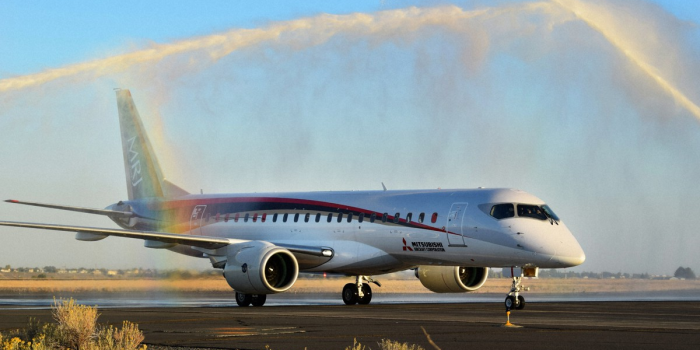Japan’s Ministry of Economy, Trade, and Industry is striving to revive the nation’s aviation aspirations. By convening domestic and international aircraft manufacturers alongside airlines, the ministry aims to facilitate the introduction of a new aircraft by 2035.
This initiative follows Mitsubishi Heavy Industries’ decision to halt the development of a regional jet after 15 years of endeavor. The government’s aircraft industry strategy, officially endorsed on Wednesday, outlines this plan.
The government has long been looking for a passenger plane made in the country. To construct a next-generation aircraft powered by hydrogen or alternative energy sources, the ministry would support a ¥5 trillion ($33 billion) project over the next ten years, officials announced in a briefing on Wednesday. Boeing made the disclosure to boost consumer confidence in its aircraft.
According to the commerce ministry, the demand for air travel worldwide is expected to triple in 20 years, and significant investment in Japan’s aviation sector will result in annual growth of up to ¥6 trillion, or five times the current level.
“Japan needs to dive into profitable and value-providing territories other than providing some parts for the airline industry,” Masuo Kuremura, director of the ministry’s aerospace and defense industry division, said during a briefing.
Major suppliers to Boeing and other aircraft manufacturers, including Airbus, include Mitsubishi Heavy and Kawasaki Heavy Industries.

Mitsubishi planned to launch the SpaceJet, the nation’s first home-built aircraft in fifty years, with support from a ¥50 billion government investment. Instead, the derailed project acquired sunk costs exceeding ¥1 trillion.
The SpaceJet, formerly the Mitsubishi Regional Jet, was supposed to be delivered in 2008. Still, delays caused by the coronavirus outbreak caused the project to be shelved six times before it was finally abandoned.
Last year, Mitsubishi Heavy stated that it could not develop SpiceJet due to a lack of technological know-how and knowledge and difficulties obtaining regulatory approval in the United States. The demand to decarbonize and electrify also made the firm reevaluate its approach.
“It is our mission to take full advantage of know-how and experiences (gained from the regional jet project),” said Kazuchika Iwata, a senior vice minister of the industry ministry, who attended the panel meeting that drew up the new industry strategy.
The panel attributed the regional jet project’s failure to several factors, including a lack of clarity in the market environment and inadequate government involvement in the project.
Regarding the strategy for creating new aircraft, the panel stated that talent and expertise have been amassed and that the groundwork has almost been completed.
To sustain Japan’s aircraft sector, the new plan strongly emphasizes supply networks. The airline industry has established a goal to eliminate carbon emissions on a net basis by 2050. In light of this, the public and commercial sectors are investigating hydrogen engine technology and sustainable energy choices.

In contrast to the previous initiative, this one will involve a larger number of participants, including the Japanese space agency, energy-related companies, automakers such as Subaru, Mitsubishi Heavy, Kawasaki Heavy Industries, and heavy machinery manufacturer IHI.
Kuremura stated, “We will need to build new technology” and work with original equipment manufacturers from overseas.
It is anticipated that the new aircraft’s development will use Japan’s technological know-how and expertise in fields including equipment, engines, and aircraft bodies, which could result in the building of final assembly plants there.
Japan had a robust aircraft manufacturing industry before and during World War II, producing fighter jets like the Zero fighter. However, the sector was outlawed by the Allied Occupation until 1952.
The development of the Mitsubishi SpaceJet was effectively the country’s first attempt to build a commercial aircraft since Nihon Aircraft Manufacturing’s YS-11 turboprop, which was canceled in 1974.


